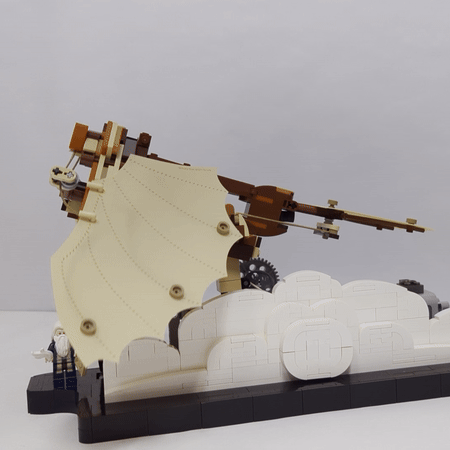Review - The Art Of LEGO Design
/Let's face it, there's a lot of LEGO books available right now. Most of them are genre themed, or specific to a particular subset of the hobby. A great any of them aren't particularly helpful. Well Jordan Schwartz is here to change that, at least from a design point of view.
Jordan is a former LEGO designer, one of the youngest in the company's history, and an active member of the AFOL community. He shares his, along with several notable LEGO builders, experience with design and building philosophy in this rather unique book from No Starch Press.
As a disclaimer I need to point out that Jordan is a friend of mine, but I will try to keep things impartial. Jordan and I go back several years and even though I'm old enough to be his father, he still talks to me and is willing to be seen with me in public, nuff said.
So the central theme of this book is design, which in and of itself is a bit of a vague concept. Are we talking about the nuts and bolts of physical connections? Is it about inspiration and imagination of a idea? Is it about planning and intent? Well, the book is about all those things, as well as color, perspective, themes and many more. While most books are about "here you go" this book is about "where do you want to go?"
The book starts with inspiration and preparation, and covers some basic concepts of LEGO elements and their use. It them moves on to popular topics like Minifigures, color, texture, photography and composition. Then it moves on to popular building themes like figures and science fiction.
Since it's about such a large concept, and it's only about 270 pages, no one particular subject can be delved into too deeply. I found myself several times just getting into a subject just to find the chapter was done. This is my principal complaint of this book, not quite enough info about too many subjects.
But the info that is provided is quite good, and more to the point, it makes you think. Sitting back and looking at your work, stepping away and thinking about it and sometimes just mulling a MOC over for a length of time is something that I don't think enough builders do, and it's an important step in any artistic endeavor. Some will just say "I'm just playing", and that's fine. We do need to keep our feet on the ground and remember it's a toy. But I consider next-level building an art form, and should be approached from an artistic perspective. This book will help you find and hone that perspective.
One of the best parts of the book is the inclusion of notable builders from the community like Iain Heath and Tyler Clites. We see their work all the time, and can sometimes get the backstory on some of the builds, but rarely do we get an inside look at their design philosophy.
It was also great to see a lot of advice about photography. Being a blog administrator I'm always on the lookout for new MOCs to feature and it's so heartbreaking to see some amazing work totally kneecapped by bad photography. A marvelous MOC deserves a marvelous picture, use the advice in the book to take your pics to the next level.
I do have a few harsh words for the book. I don't know if it was the environments I was reading in (on a plane and sitting on a balcony in Hawaii) but for some reason the book was continually warping and buckling while I read, something I've not really experienced with No Starch books before. I don't know why, but it made the book feel a little "cheap". And I don't know how much influence Jordan had about the cover, but with all the amazing MOCs he's designed through the years, why this one for the cover? It's just my opinion, but I would have picked something else. Also, the layout in the the book is a bit scattershot and disjointed, which I found unsettling in a book about design.
All that is pretty nitpicky I know, but I'm compelled to share.
I recommend this book, for both the novice and the seasoned builder. It can make you a better builder no matter what your skill level.
I give it four out of five Nerdlys
If you're interested in ordering this book, please consider using this link and supporting BrickNerd



















